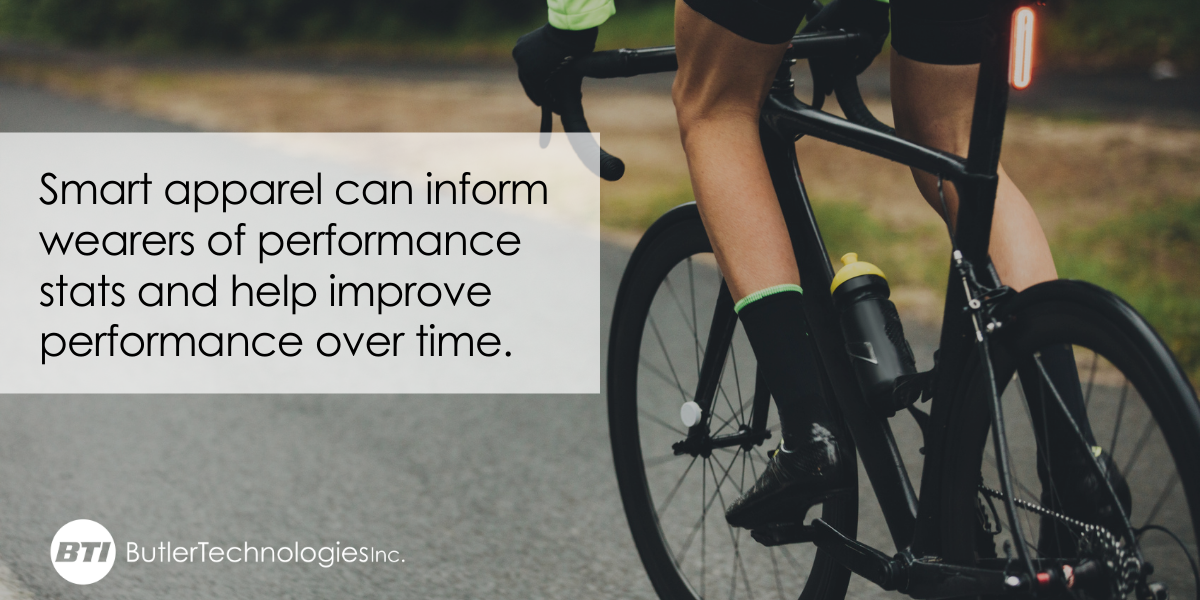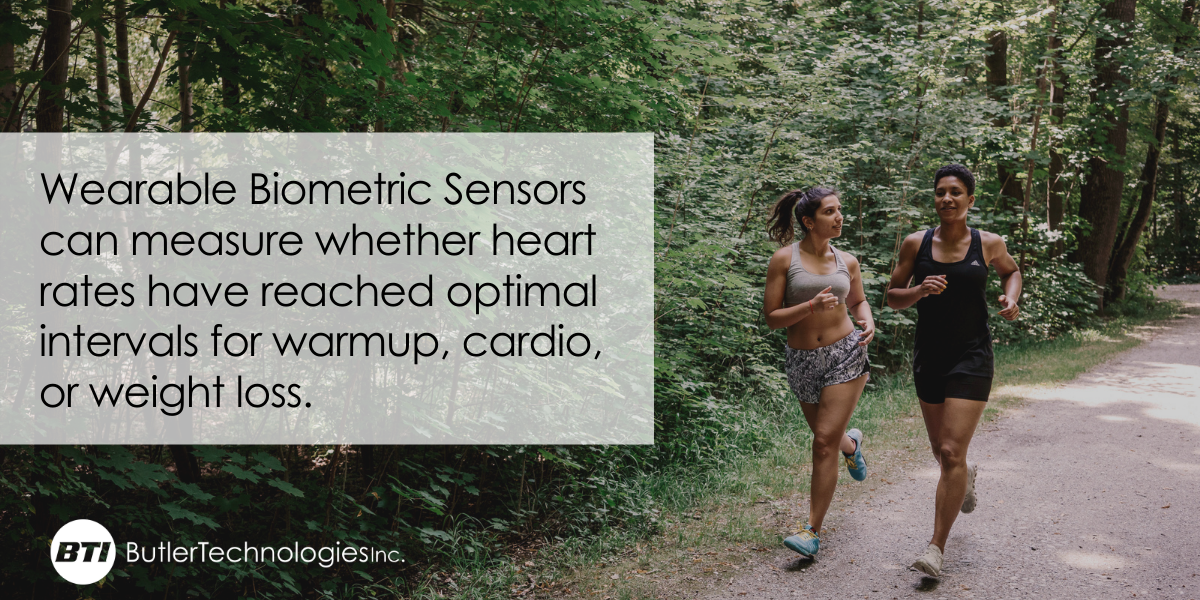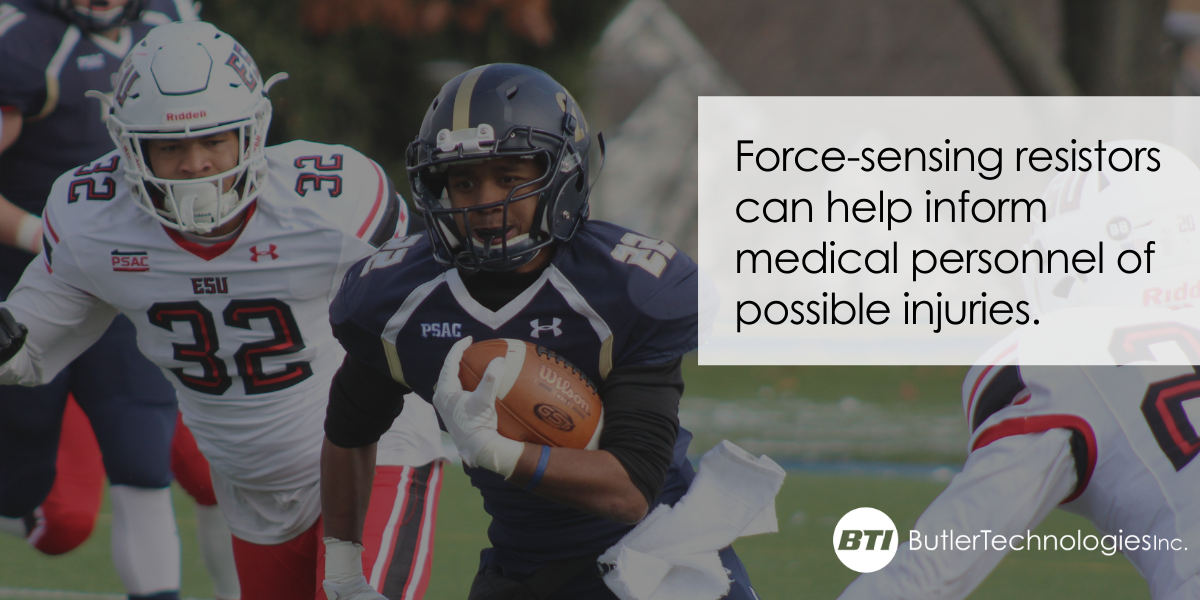Wearable technology, commonly referred to as “wearables”, has become incredibly popular with fitness-focused consumers in the past decade. Wearables are smart electronics worn close to or in direct contact with the skin and can consist of various technology solutions, such as a simple pair of Bluetooth headphones or a more complex electronic that analyzes body data or monitors changes in the wearer’s environment. Wearables can also be called smart clothing, e-textiles, smart fabrics, or smart garments.
Popularized by smartwatches like the Apple Watch, wearables have become a staple of tech-conscious consumers as they function much like any smartphone or computer and track health data for the wearer.
The same technology in devices like heart pressure monitors at your local pharmacy or foot pressure monitors like those you see at running shoe stores can be applied to portable, wearable devices so that you can have this technology personalized to you and accessible no matter where you are.
Not only can this data help people stay informed and healthy, but it can also improve their training and performance.When athletes are up and moving, they can’t be fumbling around in a mess of wires. A heavy piece of equipment, and the wires necessary to keep it functional, are the last thing you want to be distracted by, whether you’re a professional athlete on the field or simply opting for a morning jog. You can’t clear your mind and focus on the game with a computer tied to your arms or legs. Your performance and experience will suffer anyways, nullifying any potential benefits.
Printed electronics manufacturing has revolutionized the smart clothing market by focusing on the user experience of athletes or fitness connoisseurs who have a desire for smart clothing.
Inks like carbon and silver conduct electricity and can be screen-printed into thin, flexible circuitry before being incorporated into lightweight athletic clothing. By screen-printing wearable electronics from start to finish, the weight and wires of traditional electronics are gone. This smart clothing can be worn much like any other apparel option. They are not only portable, lightweight, and comfortable, but they’re also waterproof — a key feature in any athletic garment that will be subject to sweat or rainy conditions.
There are three main types of wearable technology best suited for sports and fitness applications: biometric sensors, flexible heaters, and force-sensing resistors.
Wearable Biometric Sensors for Informed Workout Data
Several different types of sensors are used to measure health data on the body. Two main types of these sensors are biosensors and biometric sensors, which sound similar but function differently.
Biosensors refer to a sensor that reacts to a fluid or chemical present at the sensor’s location, such as a glucose monitor which reacts to blood, or a hydration sensor that measures the salinity of sweat. However, biometric sensors require no chemical presence and instead react on electrical signals coming from the body through contact with the skin.
While traditional wired biometric sensors have been used in hospitals and medical settings for decades, biometric sensors can also be made without wires via printed electronics. Conductive silver or carbon inks can be screen-printed into thin, flexible, wireless sensors that pick up biometric signals from the skin while worn within a wearable athletic garment, making this smart clothing technology not only wearable but also portable for athletes and gymgoers.This means that while the wearer is exercising, their fitness gear itself can measure heart rate, breath rate, or body temperature.
Through measuring heart rate, users can measure when they’ve gotten to optimal heart rate intervals for warmup/cooldown, cardio, or weight loss levels. They can arm themselves with an alarm if their heart rate spikes or is too high and they need to take a break, such as during extensive hikes on difficult terrain or at different altitudes. Heart rate and body temperature data can help wearers stay informed of their body’s performance stats and improve their performance over time.
Biometric sensors can also send the electrical signal from the garment and into the muscle via Electrical Muscle Stimulation, commonly referred to as E-Stim or EMS. E-Stim sends electrical pulses through the skin to help stimulate muscles or nerves in various use cases.
EMS can help build up muscles in hard-to-reach areas that aren’t used naturally or regularly enough by stimulating muscles with a small electric current. Electrical Muscle Stimulation can also help with exercise recovery by stimulating injured or overworked muscles or managing pain by manipulating nerves. E-Stim uses specific electrical signal wavelengths, so the smart apparel manufacturer can customize the garment as needed to target muscles or nerves.
Another possible application is Transcutaneous Electrical Nerve Stimulation, or TENS, which is similar to EMS, but works by blocking pain signals from being sent to the brain.
Heated Apparel for Outdoor Exercise and Optimized Training
Traditionally, heated gear has always been wired, such as in wired heating pads that help soothe aching muscles or recover from an injury. However, printed electronics have made wireless, flexible heaters the new norm, as conductive inks remove the need for wires entirely. Flexible substrates allow for these heaters to be easily applied directly to clothing, serving as a lightweight heated apparel option no matter the user’s location or climate.
For example, wireless, printed heaters can be incorporated into smart clothing such as winter coats and jackets to keep anyone warm while exploring outdoors.For those in varying climates or between seasons, heated lightweight jackets, rain pants or other outer-layer clothing can be worn while the weather is still cold on a frigid morning, before being removed when the sun comes out.
Form-fitting apparel like yoga pants can be upgraded with flexible heaters custom-designed for specific temperatures – so that even if they’re not in a warmed yoga studio, yogis and their muscles can get the most out of their practice.
However, these flexible heaters can also be put into first-layer clothing items. Shirts, pants and undergarments can all keep the wearer warm from the base layer to preserve and aid precious body heat. Heated socks and gloves can keep extremities warm and prevent frostbite from creeping in. Gloves can serve a multi-purpose while warming on the inside while being custom-designed for the sport on the outside – like heated gloves for soccer goalies playing in frigid conditions or rowers who have to practice in early mornings – while heated socks provide warmth without hand warmers bunching up at the bottom of your ski boot at the most inopportune moment.
Temperature is a key part of training, and whether smart clothing end-users will use their heated apparel to optimize training, prevent injury, or just keep them comfortable, there are boundless opportunities for flexible, wireless heaters in this space.
Force-Sensing Resistors Help Improve Form and Balance
Force-sensing resistors (FSR) are self-explanatory. They are used to sense the amount of force applied to an object. This sensor, or resistor, measures the force through electrical resistance.
An FSR uses conductive silver and carbon inks, printed between two layers of flexible material on the top and bottom. When you press on the FSR, the conductive inks are connected and can send a brief electrical signal to notify that it’s been pressed and to what extent.
Force-sensing resistors can sense varying amounts of force, from a vial of liquid to hundreds of pounds or more. They can also be custom-designed for any application, being manufactured in any shape or size and heat-transferred onto different materials and fabrics.
FSRs can use body weight to determine the user’s posture or form during exercise. Runners can wear shoes with FSRs in the soles to inform their running form and prevent injury. In weightlifting, rowing, yoga, and any other fitness activities where balance is a key factor in overall performance, FSRs can inform users of the symmetry of their form or feet and hand placements.Wearable FSRs can also measure the amount of force applied when training or determine if one side of the body is stronger than the other. Alternatively, they can help the wearer target specific muscle groups by measuring force applied across multiple muscles while training.
Additionally, FSRs can serve as a reference for sports injuries when it comes to collisions or injuries when out on the field. They can be incorporated into football helmets, shoulder or knee pads, and other protective gear to measure when, where, and how hard the impact was in order to inform medical treatment, should medical personnel be worried about possible concussions.
Wearable Technology for Injury Recovery
Biometric sensors, flexible heaters, and force-sensing resistors in smart clothing all have their place on the field. They can help improve performance, keep wearers comfortable, and inform consumers with data about their workouts and health stats. But they can also help athletes and everyday gymgoers in the event of an injury or during physical therapy.Flexible heaters in activewear can help alleviate pain and promote healing after a muscle sprain, overextension or simply while taking it easy on a rest day. Temperatures can be customized to the specific application, and because flexible printed heaters are wireless and lightweight, heated apparel, wraps or braces won’t bunch up or cause any extra discomfort.
If physical therapy is necessary after a particularly rough injury, biometric sensors can aid in tracking daily exercise routines to make sure patients are using correct form and following doctor’s orders. Biometric sensors or force-sensing resistors in activewear can also help identify fatigue in muscle groups or to compare one side of the body to the other.
Smart Athletic Apparel Is the Natural Next Step for Fitness Geeks
This technology makes it possible for active consumers to track their progress, prevent and measure injuries, and stay comfortable so that they can continually improve while staying active.
Thanks to innovative technology through printed electronics, athletes and everyday fitness hobbyists can arm themselves with the best information and health tools available to optimize their workouts. Because this wearable technology can be incorporated into thin, stretchable materials, this technology is accessible and portable so that consumers can take it with them, whether out on the field or enjoying a day in the great outdoors.
Between technology advancements in printed electronics manufacturing, and a fitness-focused consumer base ready to level up their training potential, there’s never been a better time to start incorporating technology into smart activewear.
Are you ready to start your next smart clothing project? Reach out to Butler Technologies, Inc. to talk with our team today.
Meet the Author
 Madelyn is an integrated marketing specialist at Butler Technologies and has a passion for problem-solving, project management, and storytelling. She loves marketing in the B2B technology space and has a degree in English specializing in editing, writing and media from Florida State University.
Madelyn is an integrated marketing specialist at Butler Technologies and has a passion for problem-solving, project management, and storytelling. She loves marketing in the B2B technology space and has a degree in English specializing in editing, writing and media from Florida State University.
